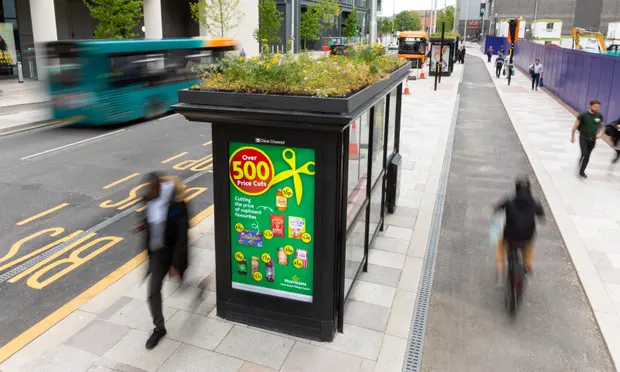Bee bus stops first appeared in the Dutch city of Utrecht. Now the UK is planning for more than 1,000 and there is growing interest across Europe and in Canada and Australia.

Butterflies and bees are getting their own transport network as “bee bus stops” start to pop up around UK cities and across Europe. Humble bus shelter roofs are being turned into riots of colour, with the number of miniature gardens – full of pollinator-friendly flora such as wild strawberries, poppies and pansies.
Clear Channel aims to create at least 1,000 bee bus stops in the UK, hopefully more. They are already established in the Netherlands, Denmark and Sweden, and the company is building them in France and Belgium later this year, with inquiries coming from as far afield as Canada and Australia.
“We want to roll this out to as many countries as possible. We see this as a long-term, scalable addition to our bus shelters. We’d like to do them everywhere, the positive effects are incredible,” said Louise Stubbings, creative director at Clear Channel UK.
The average bus shelter has a shelf life of at least 20 years. Ones with living roofs have to be specially designed because the soil is so heavy, especially when it is full of water, and Clear Channel is installing them only where shelters need replacing.
Dutch cities have managed to stabilise urban bee populations in recent years, a study found last year, following decades of declines, and bee hotels and bee stops were among their solutions (see Dutch Bee Strategy). Utrecht, which was Europe’s first city to get bee bus stops, now has more than 300. It has created a “no roofs unused” policy, in which every roof will now be greened with plants and mosses or have solar panels.